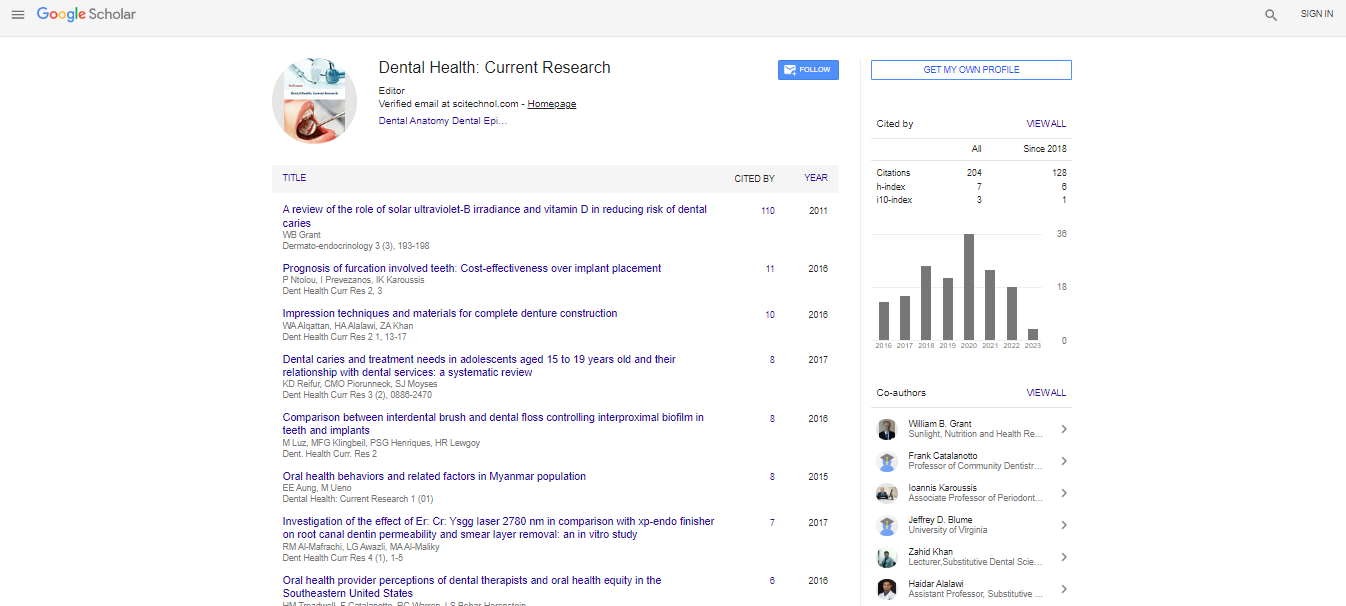Thermocycling effect on shear bond sterngth of orthodontic molar tube bonded with two different adhesive systems
Shereen El Mahlawy
Fayoum University ,Egypt
: Dent Health Curr Res
Abstract
Background: Bonded molar tubes are routinely used by orthodontists on the account of their proper cost, with the improvement of adhesive systems, design of molar tube and the possibility for accurate positioning of the tube as well as saving time may have motivated orthodontists for fitting of less bands. The change in temperature at oral cavity as well as difference in humidity, stresses and composition and amount of plaque create a complicated environment that cannot be imitated in laboratory studies. These variations affect orthodontic adhesives and it is important for us to determine whether bond strength is influenced by these changes or not? Objectives: The aim of the study was to compare the effect of thermocycling on shear bond strength of two different adhesive systems used for bonding orthodontic molar tube. Materials and Methods: The study was performed on 60 extracted human molar teeth, randomly divided into two equal groups. In Group I, the conventional light cure adhesive system was used for bonding molar tube. While, Group II was bonded with the single component adhesive system. All teeth were stored for 24 hours in water at 37o C, then 15 specimens of each group were thermocycled between 5 and 55oC for 1000 cycles. The teeth in all groups were deboned using a universal testing machine. Studentâ??s t- test was used to compare the shear bond strength between the groups. Scanning electron microscope was used to evaluate the depth of resin tag penetration. Results: The mean shear bond strength of group I was (15.9 +/- 3.4 Mpa) and that for group II was (13.1 +/- 3.9 Mpa). There was a statistically significant difference between the two groups (p= 0.04).The result of studentâ??s t- test comparisons of shear bond strength of group I and II following thermocycling indicated that there was a statistically significant where (p= 0.02), (p= 0.01) respectively. The comparison of resin tag penetration showed that there was a statistically significance difference between the two groups (p= 0.0003). Conclusion: Conventional adhesive group had a significantly higher mean shear bond strength than single component adhesive group. The mean shear bond strength value was significantly decreased following thermocycling at both adhesives. The depth of resin tag penetration at conventional adhesive group was higher than the single component adhesive group.
Biography
Shereen El Mahlawy is working as an Associate professor of orthodontics, Faculty of oral And Dental Medicine, Fayoum University, Egypt
 Spanish
Spanish  Chinese
Chinese  Russian
Russian  German
German  French
French  Japanese
Japanese  Portuguese
Portuguese  Hindi
Hindi 